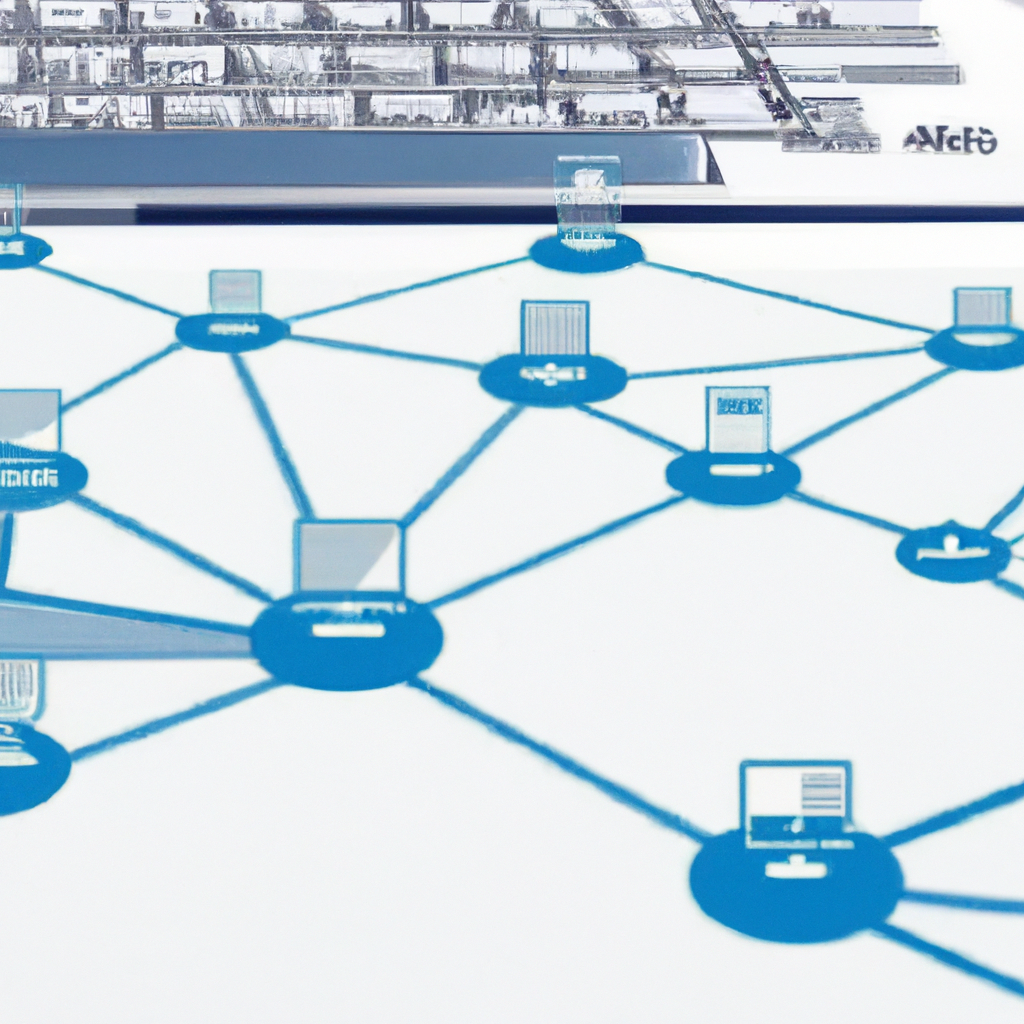In this article, you will discover the powerful solution provided by Azure Blueprints in ensuring governance and compliance across your Azure environment. With Azure Blueprints, you have the ability to define a standardized set of resources, policies, and controls that apply to your entire Azure infrastructure. By implementing these blueprints, you can effortlessly enforce consistent governance practices while meeting compliance requirements, providing you with peace of mind and the freedom to focus on your core business objectives.

What are Azure Blueprints?
Azure Blueprints are a powerful tool in the Azure ecosystem that help you enforce governance and compliance in your cloud environment. It provides a structured approach to automate the deployment and management of Azure resources, ensuring consistency, security, and regulatory compliance.
Importance of Enforcing Governance and Compliance
Enforcing governance and compliance is essential for organizations to maintain control and security over their cloud environment. Without proper governance, managing resources and ensuring adherence to regulatory frameworks can become a challenging task. This is where Azure Blueprints come in, as they provide a standardized and automated way to enforce governance and compliance across your Azure subscriptions.

Components of Azure Blueprints
Blueprint Definitions
Blueprint Definitions are the foundation of Azure Blueprints. They define the architecture and policies that need to be implemented across Azure subscriptions. A Blueprint Definition consists of artifacts, role assignments, policy assignments, and resource groups that collectively define the resources and configurations required for a specific deployment.
Artifacts
Artifacts are the building blocks of a Blueprint Definition. They encapsulate resources such as virtual machines, storage accounts, networking components, and more. Artifacts define the actual resources that will be provisioned when a Blueprint is assigned to a subscription.
Role Assignments
Role Assignments define the Azure AD roles and role-based access controls (RBAC) that are assigned to specific users or groups within the Azure subscription. This allows organizations to enforce fine-grained access controls and ensure that the right people have the right level of access to resources.
Policy Assignments
Policy Assignments enable organizations to enforce specific Azure policies within their subscriptions. Azure policies help enforce rules and regulations by evaluating resources against a set of predefined conditions. By assigning policies through Azure Blueprints, organizations can ensure their subscriptions adhere to regulatory and security standards.
Resource Groups
Resource Groups are logical containers that help organize and manage Azure resources. When creating a Blueprint, you can define the specific resource groups that are required for the deployment. This allows for better management and isolation of resources within your Azure environment.
Creating and Managing Azure Blueprints
Defining Blueprint Structure
When creating a Blueprint, you start by defining its structure. This involves deciding on the required artifacts, role assignments, policy assignments, and resource groups. By defining the blueprint structure, you can ensure consistency and scalability across multiple deployments.
Configuring Blueprint Parameters
Blueprint Parameters allow you to define variables that can be customized during the blueprint assignment process. This allows for flexibility and reusability of blueprints, as different values can be passed for each deployment, depending on the specific requirements.
Adding Artifacts
Artifacts form the core components of a Blueprint Definition. You can add various artifacts, such as virtual machines, storage accounts, and network configurations, to define the desired resource provisioning and configuration.
Assigning Blueprint Permissions
To ensure proper access control, you can assign specific Azure AD roles and RBAC settings through Azure Blueprints. This allows you to grant and restrict access to resources within the deployed blueprints, ensuring that only the appropriate users or groups have the necessary permissions.
Implementing Blueprint Policies
Azure policies play a critical role in enforcing regulatory and security compliance. Through Azure Blueprints, you can assign specific policies to be enforced within the blueprints. This ensures that the desired policies are automatically enforced during the deployment process.
Updating and Versioning Blueprints
Over time, blueprints may need updates or enhancements. Azure Blueprints allows for easy updating and versioning of blueprints, ensuring that changes in policies, configurations, or resources can be seamlessly applied to existing deployments.
Deleting and Deprecating Blueprints
When a blueprint is no longer needed or has become outdated, it can be deleted or deprecated. Deleting a blueprint removes it from the Azure environment, while deprecating a blueprint marks it as no longer recommended for use. This helps maintain a clean and up-to-date blueprint catalog.

Enforcing Governance with Azure Blueprints
Ensuring Consistency and Compliance
Azure Blueprints provide a standardized approach to deploying resources, ensuring that all resources within a deployment adhere to the defined blueprint structure. This consistency helps organizations maintain compliance with regulatory frameworks and internal policies.
Standardizing Azure Deployments
By using Azure Blueprints, organizations can standardize their Azure deployments across multiple teams and projects. This ensures that all deployments follow the same blueprint structure, resulting in consistent and predictable experiences for users and administrators.
Automating Policy Enforcement
Azure Blueprints allow for the automatic enforcement of Azure policies. This eliminates the need for manual policy enforcement and reduces the risk of misconfigurations or non-compliance. By automating policy enforcement, organizations can ensure the continuous compliance of their Azure environment.
Implementing Regulatory Requirements
Various industries have specific regulatory requirements that must be met. Azure Blueprints make it easier to implement these regulatory requirements by providing a structured approach to enforce policies, assign access controls, and manage resources. This simplifies the process of achieving compliance and helps organizations meet their regulatory obligations.
Centralizing Governance Controls
Through Azure Blueprints, organizations can centralize their governance controls. Blueprints serve as a single source of truth for resource deployments, access controls, and policy enforcement. This centralization simplifies the management and monitoring of governance controls, making it easier to maintain compliance and security.
Benefits of Using Azure Blueprints for Governance and Compliance
Streamlined Deployment Processes
By using Azure Blueprints, organizations can streamline their deployment processes. Blueprints provide a structured and repeatable approach to resource provisioning, reducing the time and effort required for manual deployment tasks. This increased efficiency allows IT teams to focus on strategic initiatives rather than repetitive tasks.
Reduced Risk and Improved Security
Enforcing governance and compliance through Azure Blueprints helps reduce the risk of misconfigurations and security vulnerabilities. By following a standardized and pre-approved blueprint structure, organizations can ensure that all deployments adhere to security best practices and regulatory requirements. This improves the overall security posture of the Azure environment.
Effective Auditing and Reporting
Azure Blueprints enable effective auditing and reporting capabilities. The structured nature of blueprints allows for easy tracking of resources, access controls, and policy enforcement. This simplifies the auditing process, making it easier to generate compliance reports and identify any non-compliant or high-risk areas.
Scalability and Flexibility
Azure Blueprints provide scalability and flexibility in resource deployments. By defining a blueprint structure, organizations can easily replicate and deploy resources across multiple subscriptions or environments. This scalability helps organizations streamline their resource provisioning processes and provides the flexibility to adapt to changing business needs.
Collaboration and Reusability
Azure Blueprints promote collaboration and reusability across teams and projects. By defining a blueprint structure, organizations can easily share and collaborate on deployments. Additionally, blueprints can be re-used across different projects, saving time and effort in resource provisioning and configuration.

Best Practices for Implementing Governance and Compliance with Azure Blueprints
Planning and Designing Blueprint Structures
Before creating a blueprint, it is important to carefully plan and design the blueprint structure. Consider the specific requirements of your organization and ensure that the blueprint aligns with your governance and compliance goals. This includes defining the artifacts, access controls, policies, and resource groups that will be included in the blueprint.
Aligning Blueprints with Organizational Policies
Ensure that the blueprints align with your organization’s policies and regulatory requirements. Define the specific policies that need to be enforced within the blueprints and configure policy assignments accordingly. This alignment ensures that your deployments adhere to the necessary compliance standards.
Implementing Monitoring and Alerting
Implement monitoring and alerting mechanisms to ensure ongoing compliance and security. Regularly monitor the deployed blueprints for any non-compliant resources or security vulnerabilities. Configure alerts to notify relevant stakeholders in case of any policy violations or suspicious activities.
Establishing Continuous Compliance
Compliance is an ongoing process, and it is important to establish continuous compliance with Azure Blueprints. Regularly review and assess the deployed blueprints to ensure they remain compliant with regulatory frameworks and internal policies. Implement processes to address any non-compliant resources and make necessary adjustments to the blueprints.
Regularly Reviewing and Updating Blueprints
Blueprints should be regularly reviewed and updated to reflect changes in policies, regulations, or business requirements. Conduct regular audits of the deployed blueprints and identify any areas that need modification or enhancement. Update the blueprints accordingly to maintain their relevance and effectiveness.
Case Studies: How Organizations Benefit from Azure Blueprints for Governance and Compliance
Company A: Streamlined Azure Deployments for Regulatory Compliance
Company A, a financial services organization, used Azure Blueprints to streamline their Azure deployments while ensuring regulatory compliance. By defining a blueprint structure that included specific policies and access controls, they were able to consistently deploy resources across their subscriptions. This standardized approach helped them pass regulatory audits with ease and reduced the risk of non-compliance.
Company B: Improved Security and Auditing with Blueprint Policies
Company B, a healthcare provider, leveraged Azure Blueprints to enhance security and auditing within their Azure environment. By implementing blueprint policies that enforced security best practices, they minimized the risk of data breaches and unauthorized access. The structured nature of blueprints also facilitated efficient auditing, allowing them to generate compliance reports easily.
Company C: Enforcing Consistency and Role-Based Access Controls
Company C, a multinational organization, utilized Azure Blueprints to enforce consistency and role-based access controls across their Azure subscriptions. By defining a blueprint structure that included standardized resource configurations and well-defined role assignments, they ensured that all deployments adhered to their organizational policies. This centralized approach to governance simplified resource management and improved overall security.

Current Limitations and Future Enhancements of Azure Blueprints for Governance and Compliance
Limitations in Blueprint Definitions and Artifacts
While Azure Blueprints provide a comprehensive solution for governance and compliance, there are some limitations. Currently, blueprint definitions and artifacts are limited in terms of the available resource types and customization options. Microsoft is actively working to expand the capabilities of blueprint definitions and artifacts to provide more flexibility and customization options.
Integration with Third-Party Compliance Tools
Azure Blueprints currently focuses on Azure-native policies and controls. Integration with third-party compliance tools would further enhance the capabilities of Azure Blueprints and provide a more comprehensive solution for organizations with specific compliance requirements. Microsoft is exploring partnerships and integrations with third-party compliance tools to address this need.
Enhancements in Blueprint Versioning and Rollback
While blueprint versioning and rollback are supported in Azure Blueprints, there is room for improvement. Microsoft is working on enhancements to provide more granular version control and easier rollback capabilities. This will help organizations manage changes and updates to blueprints more effectively.
Increased Template Options and Customization
Azure Blueprints currently supports a predefined set of templates for resource provisioning. Microsoft is actively working on expanding the template options and customization capabilities in Azure Blueprints. This will allow organizations to have more flexibility in defining their blueprint structures and resource configurations.
Conclusion
Azure Blueprints are a valuable tool for organizations seeking to enforce governance and compliance in their Azure environments. By providing a structured and automated approach to resource provisioning, access control, and policy enforcement, Azure Blueprints help organizations achieve consistency, security, and regulatory compliance. With the ability to streamline deployments, reduce risk, improve auditing, and enable collaboration, Azure Blueprints offer numerous benefits for organizations looking to leverage the power of Azure while maintaining governance and compliance standards. While there are some limitations, Microsoft continues to enhance and expand Azure Blueprints to address the evolving needs of organizations and provide a holistic solution for governance and compliance.
